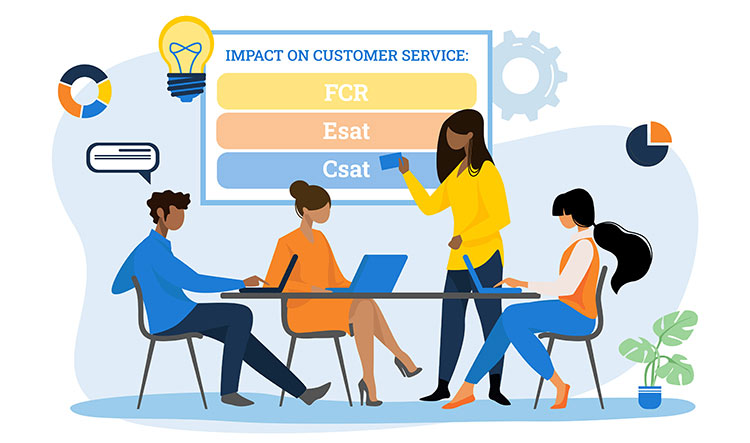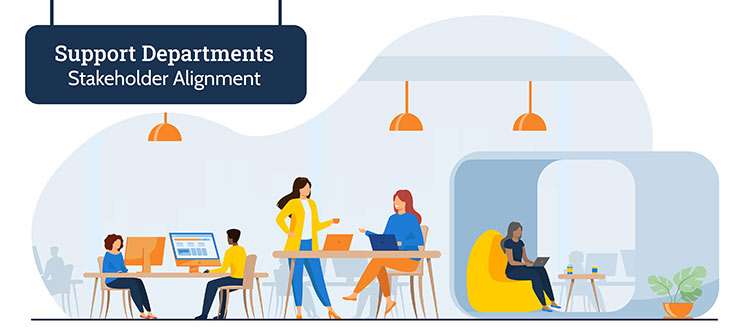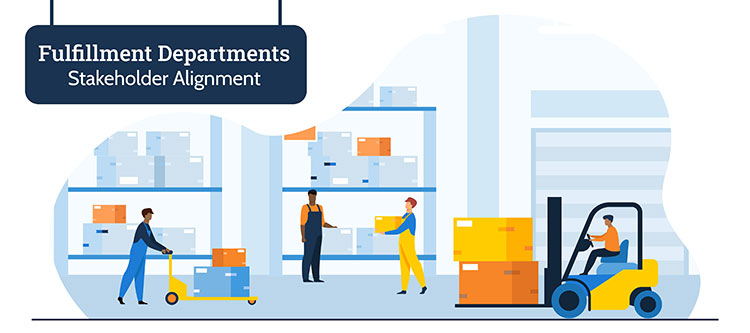Stakeholder Alignment
"Stakeholder Alignment of Performance Metrics in a Contact Center is Fundamental to the Success of Delivering Great Customer Service"
It is SQM's view that stakeholder alignment of performance metrics in a contact center for assisting them in delivering great customer service is seldom happening. In most cases, functions and departments have competing performance metrics, and working collaboratively among groups to improve contact center customer service is inconsistent.
However, world-class customer satisfaction (Csat) performing call centers have all their stakeholders such as support departments (e.g., QA, HR, IT, workforce management, training), organizational fulfillment departments (e.g., billing, credit, repair, retail stores, maintenance) and critical vendors (e.g., outsourcers, software, and technology) aligned to achieve their customer service performance objectives.
To get buy-in from stakeholder groups, you need to communicate their specific impact on customer service (e.g., FCR, Esat, and Csat) performance. The stakeholders need to have ownership in current and future customer service performance. Moreover, senior call center management needs to communicate and get buy-in from all stakeholders to achieve first call resolution and customer service goals. A strong buy-in can best be done by reviewing current customer service performance and establishing goals with all the stakeholders.

Support Departments Stakeholder Alignment
Moreover, creating ownership and alignment of FCR and Csat objectives for support departments is a best practice. Support department groups do not directly control FCR and Csat performance because they do not handle calls. However, these groups can assist Agents in handling calls by having effective support, policies, and procedures for resolving calls. Therefore they can legitimately be held accountable for FCR and Csat performance objectives.
Another best practice in creating ownership and alignment for FCR and Csat performance has agents and supervisors complete employee surveys that ask how satisfied they are with specific support departments helping them deliver great customer service.

Fulfillment Departments Stakeholder Alignment
Fulfillment departments tend to have the least ownership and alignment with the call center's FCR and Csat performance. This misalignment has been a long-term issue for the call center industry. It is essential to understand that fulfillment departments are the source of error for 30% to 40% of all unresolved calls in the call center. Thus, there is an excellent opportunity to create more ownership and alignment between the call center and the fulfillment departments. Doing so will create a better environment to improve the call center's FCR and Csat performance.
Creating more alignment between fulfillment departments and call centers is an excellent opportunity to work collaboratively with fulfillment departments to improve people, processes, and technology. In turn, these improvements will significantly reduce the call center's unresolved calls and reduce the number of customers leaving the organization to go to a direct competitor. Fulfillment departments should be held accountable for unresolved calls that can be attributed to their departments.

Vendor Stakeholder Alignment
Many organizations outsource their call centers to third parties. Therefore, creating ownership and alignment of FCR, Esat, and Csat performance objectives for third parties (e.g., outsourcers) is a best practice, but not all organizations do so. Specifically, communicating to the third parties that future contracts and/or continued work will be dependent on their FCR, Esat, and Csat performance is a best practice for creating ownership and alignment. Moreover, the outsourcer's compensation should also include the voice of the customer FCR and Csat survey results.
Interestingly, SQM has found that organizations using third parties to handle some or all of their calls are reluctant to hold third parties accountable for their Esat performance. SQM finds this to be a poor practice because if you believe there is a correlation between Esat and Csat, which most call center practitioners believe to be true, the outsourcer's compensation should also be based on the voice of the employee Esat survey results.

Quick Related Links
First Call Resolution Definition First Call Resolution PPT First Call Resolution Benefits
First Call Resolution Strategies First Call Resolution Operating Philosophy Helpdesk First Call Resolution First Call Resolution Formula Calculate First Call Resolution What is a Good FCR Rate? FCR Improvement Tips Agent CX Success Stories FCR Measurement Case Study

